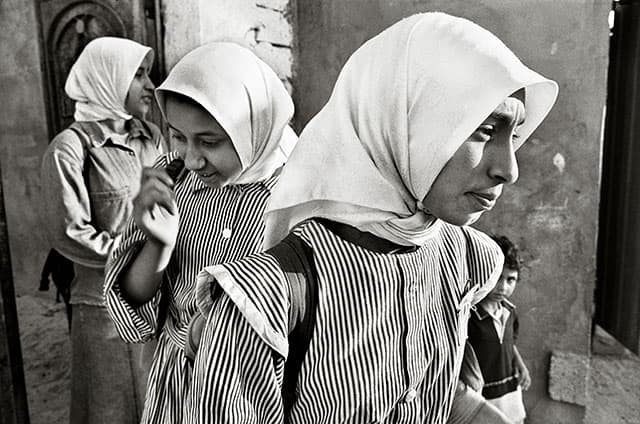Mah Bibi, Afghanistan, 2001 [© Nick Danziger/nbpictures.com]
‘Eleven Women Facing War’ at the Imperial War Museum in London will be the first UK showing for Nick Danziger’s powerful images when it opens on 4 February.
The show will feature 33 photos and 11 short films from eight conflict zones: Bosnia, Kosovo, Israel, Gaza, Hebron (West Bank), Sierra Leone, Columbia and Afghanistan.
‘We often talk about the victims of war,’ said Danziger, an award-winning photographer, author and documentary filmmaker.
He added: ‘I hope these images and stories are a tribute to these women’s indomitable spirit, endurance and bravery.’
The project began in 2001 when Danziger took photos of 11 women in conflict zones for the International Committee of the Red Cross – focusing on the specific needs of women facing war.
Ten years later, he set out to discover what had become of their lives.
Among his subjects was Mah Bibi (pictured above), a 10-year-old orphan who was destitute and begging for food for herself and two younger brothers when Danziger photographed her in Afghanistan in 2001.
Speaking at the time, she said: ‘My name is Mah Bibi. People tell me that I am ten years old. One of my brothers is five, the other seven. I am the “head” of the family. Our parents are dead.’
However, a decade on, the photographer was to learn that Mah Bibi had ‘vanished without trace and is believed to have died in 2006’, according to organisers of the exhibition, which runs until 24 April.
 Zakiya, Gaza Strip, 2001 [© Nick Danziger/nbpictures.com]
Zakiya, Gaza Strip, 2001 [© Nick Danziger/nbpictures.com]
Commenting on another of Danziger’s subjects, Mariatu, the Imperial War Museum added: ‘Mariatu, whose hands had been forcibly amputated by guerrilla soldiers at the age of 13, was struggling to rebuild her life when photographed at a rehabilitation centre in Sierra Leone in 2001.
‘Ten years later, she had moved to Canada, where she was able to lead an independent life and had published an account of her experiences.’
Hilary Roberts, research curator of photography at the Imperial War Museum, described the exhibition as a ‘moving reflection on women’s experience of war and its legacy’.







